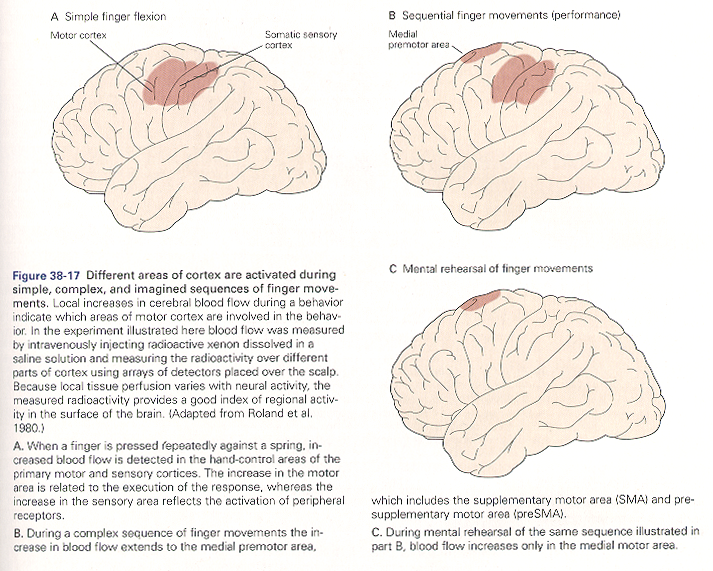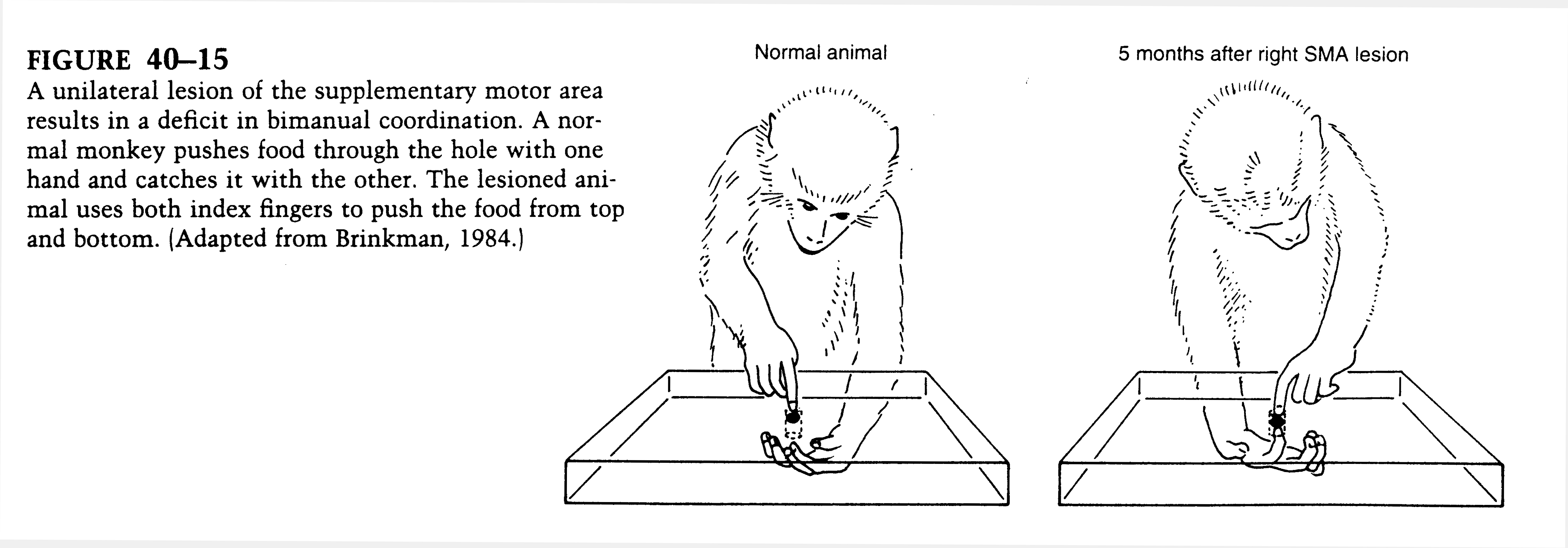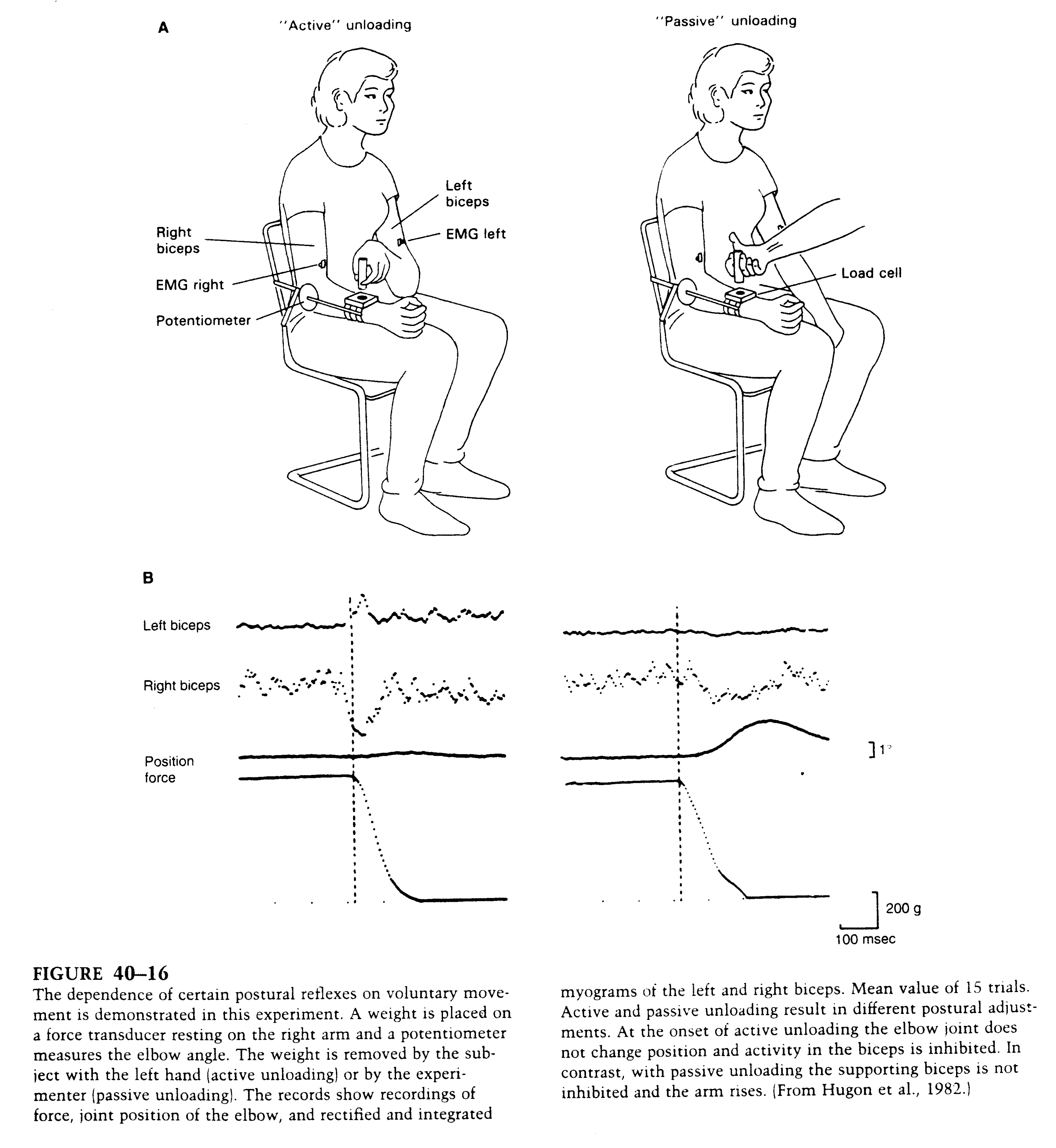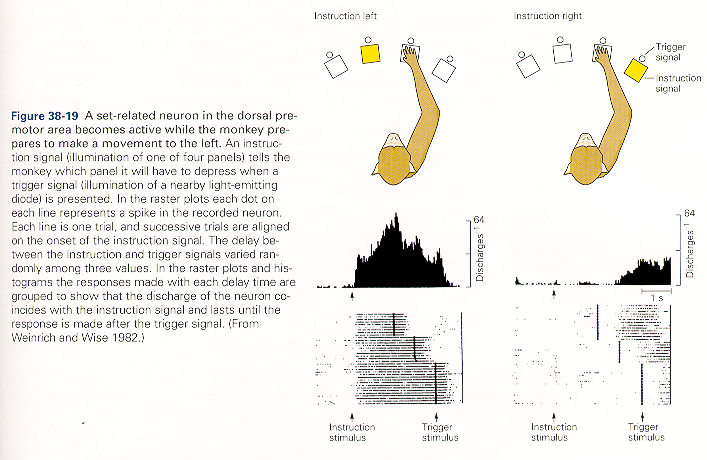Neural Control of Movement
Premotor cortices
Functions of the Supplementary motor area (motor planning)
Programming complex movement sequences.

- Simple finger movements: activity increased in MI and in primary somatosensory cortex (SI).
- Complex finger movements: activity increased in SMA in addition to the activity in MI and SI.
- Rehearse complex movement sequence mentally without executing the movement: only SMA active.
Coordination of bilateral movements

Motor deficits in monkeys with lesions in SMA:
- Monkeys severely impaired in ability to use both hands simultaneously.
- Monkeys unable to orient hands and digits appropriately while reaching for a peanut in a small well.
SMA is important for coordinating posture with voluntary movement
Subjects were asked to not move their elbow joint when a weight placed on their wrist was suddenly removed. Successful performance of the task depended on whether the weight was removed actively (by the subject) or passively (by the experimenter).

Patients with unilateral lesions of the SMA are unable to successfully complete task when weight was removed actively or passively from the affected (contralateral) arm à during performance of a voluntary movement two relatively independent but coordinated motor programs operate. One to initiate the limb movement; the other generates anticipatory postural adjustments. The second one requires an intact SMA.
Functions of the premotor cortex (motor preparation)
PM is involved with the sensory guidance of movement
PM contributes to controlling proximal movements that project the arm to targets. Main input to PM is from posterior parietal cortex which is important for providing the visual information for targeted movements. The main output of PM is to nuclei of the medial descending brainstem pathways (medullary reticular formation) that project to axial and proximal musculature. à PM involved with the control of proximal and axial muscles and with orienting body and arm to a target.

PM is involved with the preparation for motor action
Motor programming: the assembly of motor subroutines for later execution or the assembly of force and timing specifications for all muscle involved in an individual movement, including the prime mover and postural support muscles.
Motor set: the general readiness to make a particular movement
The idea that PM plays a role in motor set can be tested by studying the activity of PM cells during an instructed delay period, that is after an animal has received an instruction for a limb movement, but before it has received a signal allowing it to execute the movement.

Cells show directional selectivity, i.e. these cells show a steady excitation after an instruction for movement in one direction and show inhibition or unchanged activity after an instruction for movement in the opposite direction. PM plays a role in the preparation of specific voluntary movements, i.e. motor set.
PM is involved with the suppression of lower motor acts
PM may suppress relatively automatic responses to certain sensory stimuli. For example, monkeys with lesions of PM continued to reach directly towards a desired abject, even when the pathway was obstructed by a transparent barrier and an alternative trajectory would have been successful. Thus, no suppression of direct and immediate reaching for object (perseveration).

